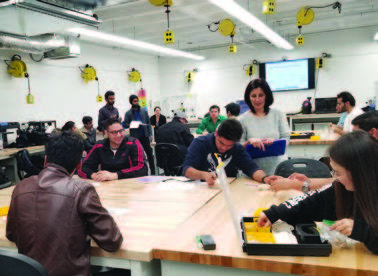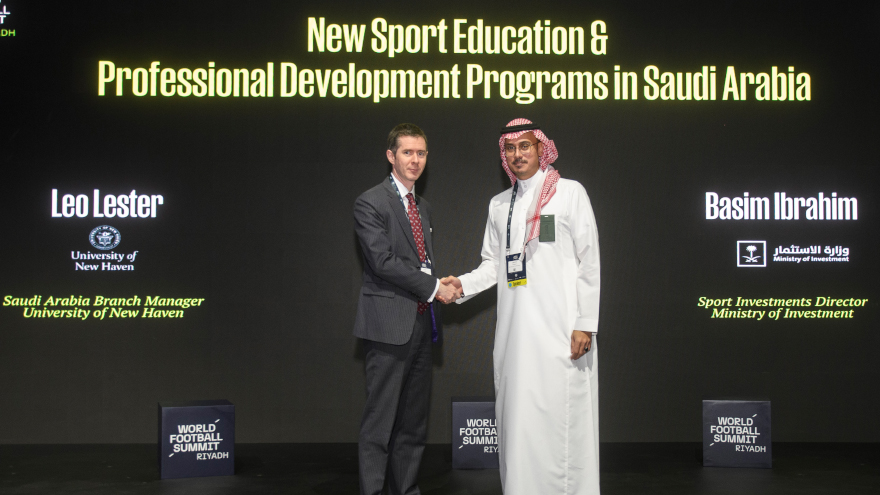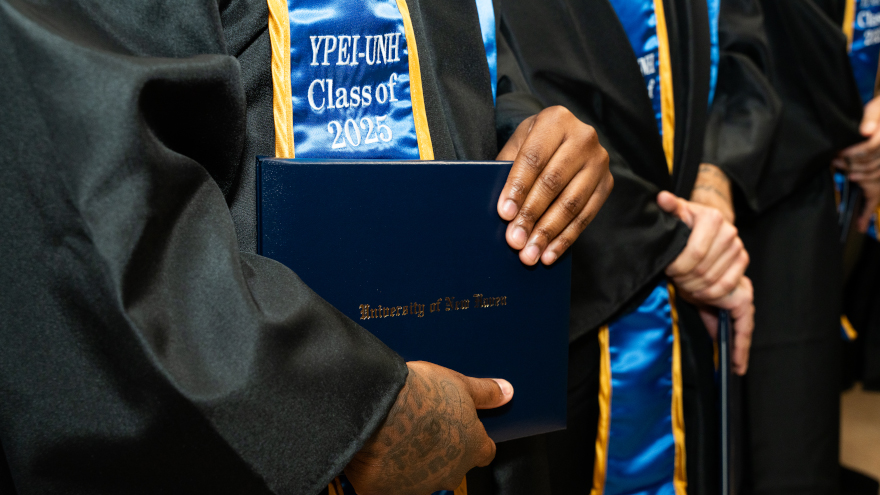April 16, 2018
By Jackie Hennessey, contributing writer

It’s a place to tinker and experiment, a place where first-year engineering students use 3D printers to create puzzle prototypes; graphic design students practice their drafting and milling skills; and industrial engineering graduate students role play the work that unfolds on a 21st century factory floor in a simulated Toyota assembly line.
This year, use of the University’s Innovation and Design Makerspace has ramped up.
"In the past, students were always tinkering, taking things apart, examining them, and putting them back together, but with so much time spent working with computers, that’s changed," said Maria-Isabel Carnasciali, Associate Professor of Mechanical Engineering. "It is important that students have a space where they have the chance to create, where they can try out ideas and learn from mistakes. That’s all part of innovating."
With $31,000 in funding from Sikorsky Aircraft, the Tagliatela College of Engineering hired students as teaching assistants to staff the Makerspace and teach students how to use the high-tech equipment and tools.
"Sikorsky’s funding has allowed us to hire student workers who can be mentors to other students and to have supplies and replacement materials and equipment." Maria-Isabel Carnasciali, Associate Professor of Mechanical Engineering
"The University Makerspace provides the physical space, state-of-the-art resources, and an intellectually-stimulating environment that inspires a culture of innovation and exploration," Woody Woodyard, Vice President, Communications at Sikorsky’s Rotary and Mission Systems, said. "Our hope is the Makerspace will inspire students to stretch their imagination and motivate them to consider careers in science, technology, engineering, and math."
"When students take advantage of the Makerspace and challenge themselves with demanding assignments, they position themselves to be very competitive as they enter the workforce," Woodyard added. "At Sikorsky and Lockheed Martin, we look for students who embrace the spirit of innovation and have a commitment to excellence."
Open from 8:00 a.m. to 10:00 p.m., the Makerspace, with its 3D printers, moveable work tables, milling and edging machines, and a wall full of tools of the old-school variety — hammers, screwdrivers, and pliers — invites creativity. TA Christopher Hill ’17, a graduate student in mechanical engineering, likes "the elbow room the space provides." "It allows us to get messy when it is needed and not be constrained by the limited space that a normal desk would give us," he said.
Hill is developing "simple and fun workshops to pull in creative students" from across all colleges at the University so they can learn new skills, discuss ideas, and possibly start collaborations with other students.
At a "Reverse Engineering" event in the Makerspace sponsored by Psi Tau Sigma, the Mechanical Engineering Honor Society, 16 students disassembled a Dyson D-39 vacuum with 15 attachment heads and then collaborated to reassemble it. Jesus Amado '19, a mechanical engineering undergraduate who organized the event, said students enjoyed "being able to use tools to take apart a component of a well-engineered vacuum such as Dyson… and see for themselves how things work to make a component, the gears, brushes, and materials."
In Nadiye Erdil’s Quality Analysis graduate class, the Makerspace became a factory floor where students role-played the assembly of cars using different manufacturing strategies. The simulation ended with the Toyota production system, "the one that laid the foundation for lean manufacturing," said Erdil, Assistant Professor of Industrial and Systems Engineering.
"The space and the flexible furniture in the Makerspace allowed us to run this hands-on simulation smoothly and let us focus on the learning objectives as opposed to spending time on figuring out how to make it work in a small space with fixed equipment." Nadiye Erdil, Assistant Professor of Industrial and Systems Engineering
Erdil said the simulation helped students understand practical applications of theoretical concepts, like discovering characteristics of different manufacturing strategies (batch and queue, continuous flow, push system, pull system) and analyzing the effects of different manufacturing strategies on the system components and the system output.
Javier Viramontes, a lecturer in the Visual and Performing Arts, said the University Makerspace allows for a beautiful blending of the very oldest and newest technologies.
"Typography is a prerequisite to civilization, and as such, there is a constant interaction between the alphabet and the technology of the time," he said. "The Makerspace will give Graphic Design students the opportunity to visibly experience this intersection, one between creative impulse and today’s technology."
Students in his typography course made a printed accordion book, "a synthesis of the knowledge they have gained throughout the semester, using the Makerspace and various tools to create it," Viramontes said. "The book’s production employed a wide range of tools and processes, which began through traditional analog means. Sketching and manipulating typographic anatomy were translated into a precisely drafted vector graphic which will be routed onto linoleum printing blocks. These books are, in a sense, a culmination of a very ancient chain of thought."



